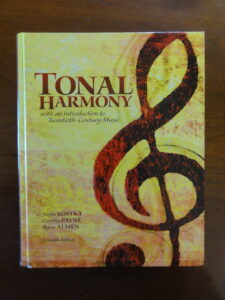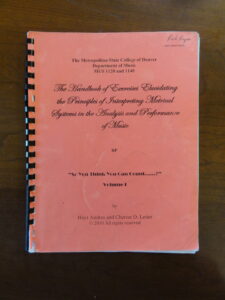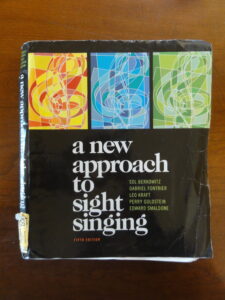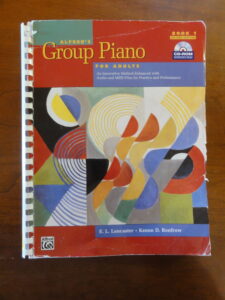(This is the 15th chapter in this series about my music career. All the previous chapters in this series can be found on the column to the right. Go here to start at the beginning.)
Back to School
While working with professional musicians in the studio during the recording of Misfit and The Other Side of Nowhere, as well as working with classically-trained violinist Paul Ermisch in Scupanon, the gap in my knowledge of music theory between me and them became painfully obvious. I decided to address that shortcoming. I bought a music theory textbook with the idea that I would learn on my own, but that didn’t work out; I lack the self-discipline. And if I was serious about being a professional musician, shouldn’t I learn the fundamentals? I had the time, having volunteered for a layoff from my day job (see Part 8 in this series). So, in the fall of 2015, at the age of 61, I went back to school at Metro State University in Denver.
For the next two years, I began my days by filling my backpack with music textbooks, notebooks, staff paper, pencils and erasers, and walked 8 blocks to the light rail station. 12 minutes after boarding the train, I would step off at the Metro State University campus in downtown Denver and walk to class. After stopping for a coffee or capucchino first, of course.
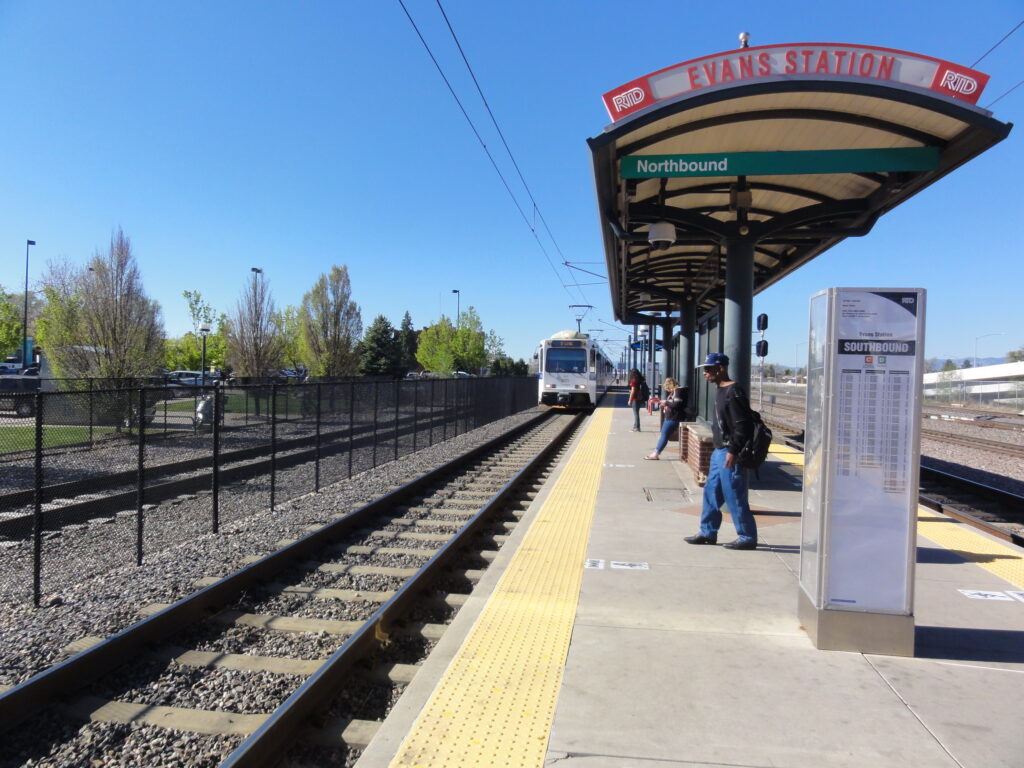
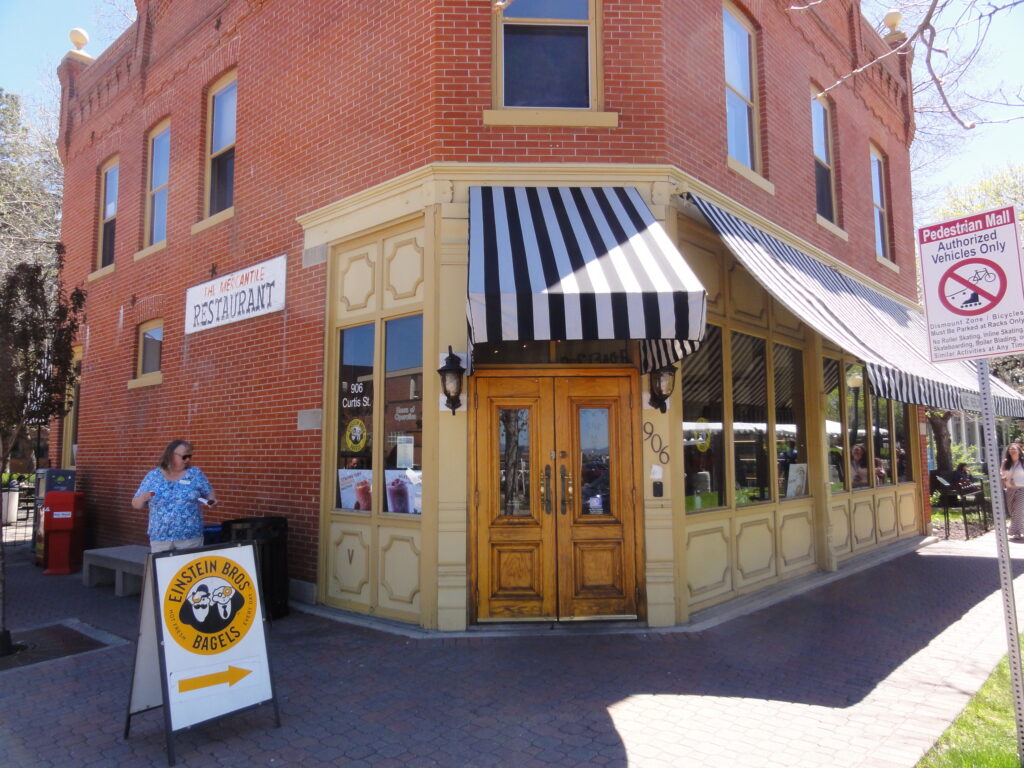
I was able to attend classes for free under a program they had for people 60 years old and over. Each semester I took Music Theory and Theory Lab, and Piano Class. I took another music class each semester as well. The free program excluded private lessons, so I wasn’t able to do that. If I had, I would have also taken private lessons on my instrument, learn to sight-read, and would have been tested by a “jury” at the end of each semester, like the real music majors were. But I did take piano class for 4 semesters, as required of all music majors. I was tested in those classes, including having to sight-read pieces put in front of me that I had never seen before. That was a difficult thing for this rock and folk guitar player. The last time I had sight-read music was when I took guitar lessons at the age of 12.
Q: How do you get a guitar player to turn down his amp?
A: Put music in front of him.
Most of the students in my classes were right out of high school, but there were a few others, who, like me, had gone back to school at an older age. I was initially worked how the 18-year-olds would treat me. Would they laugh and make fun of the “old guy?” But most of them accepted me. I would see the same ones semester after semester, and we would become friends. The only ones who weren’t friendly were the girls who were voice performance majors. I am sad to say that the stuckup diva stereotype was real.

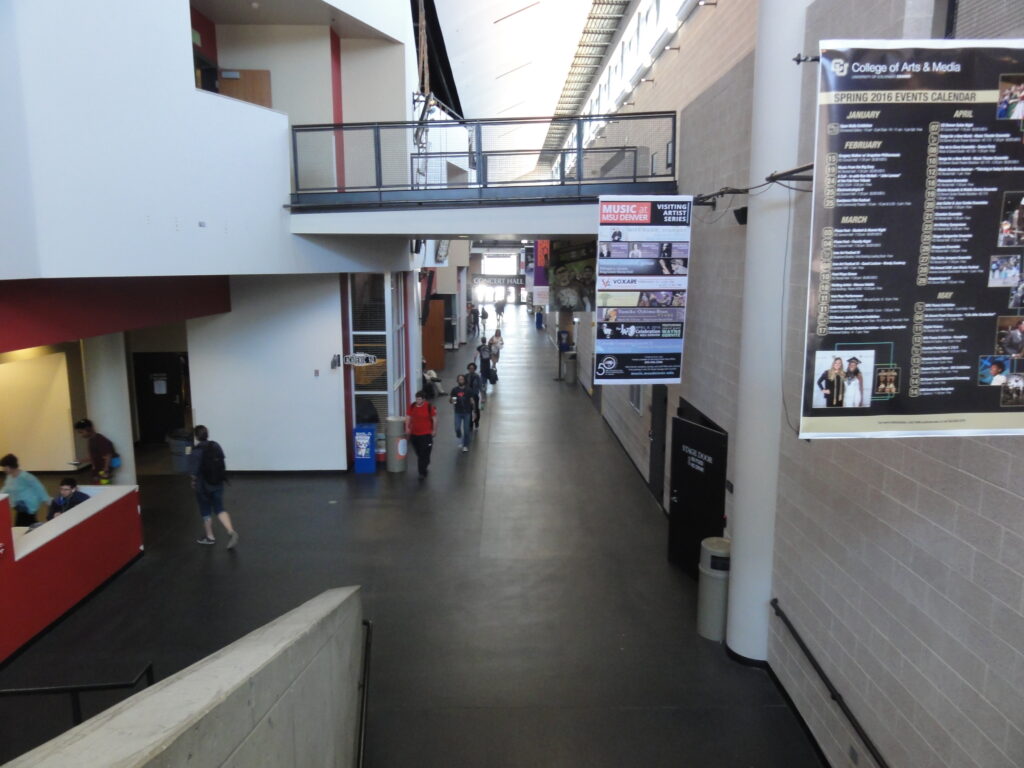
Music Theory
For those of you who have taken music theory, you know what it was like. For those who haven’t, it’s difficult to describe. It sounds intimidating. It is hard. There is a lot of homework, and you have to put the time in. I’ve heard it called a weed-out class, to separate out those who aren’t serious about a music career. And indeed, on my first day of Theory II class, I noticed a lot of people missing from Theory 1.
The Music Theory class was lecture, with written tests. Theory 1 begins with rhythm, key signatures, intervals, the major and minor scales. Then how triad chords are formed based on the scales. Then it moves on to voice-leading, or chord progressions. Things get progressively more complex, with Theory 2,3 and 4 building on the foundations of the previous classes.
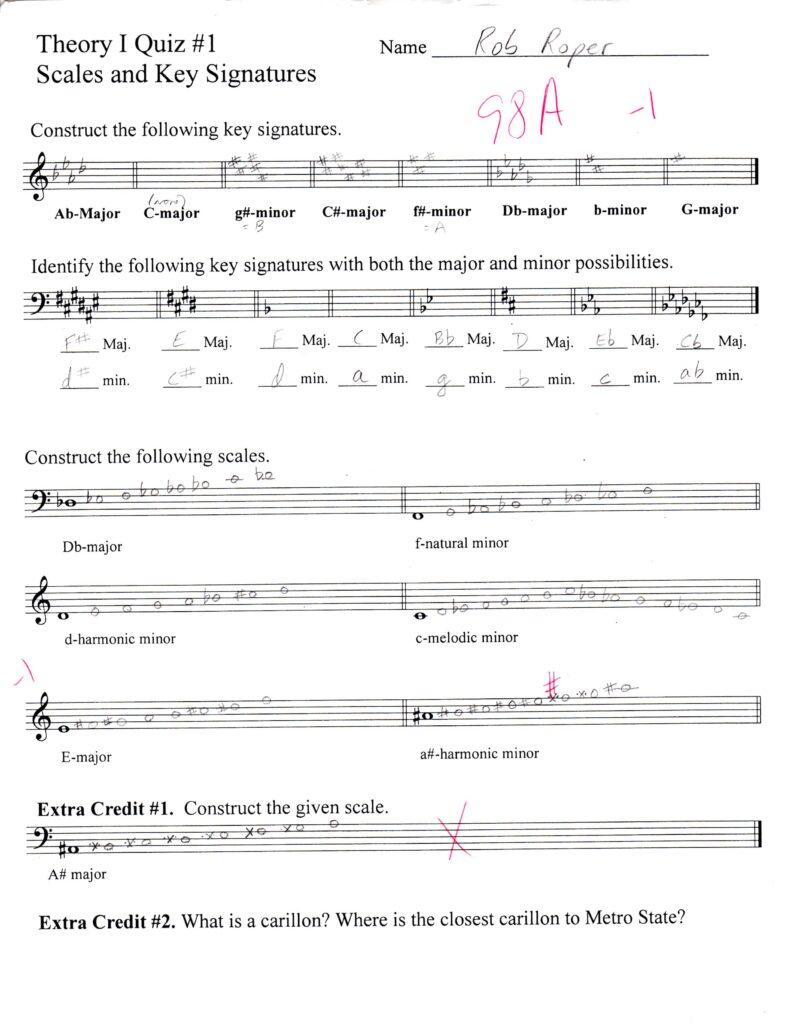
Theory Lab consisted of interval recognition, rhythm recognition and sight-reading, melody recognition and sight-singing, and chord and chord-progression recognition. To learn intervals, for example, the instructor would play two notes on the piano, and you had to name the interval– major 3rd, minor 7th, etc. For melody, the teacher would play a melody on the piano, and you had to write it on staff paper. And then the opposite– you would be given a written melody, and you had to sing it with correct pitches. Similarly for rhythm.
Try this website and see if you can recognize intervals.

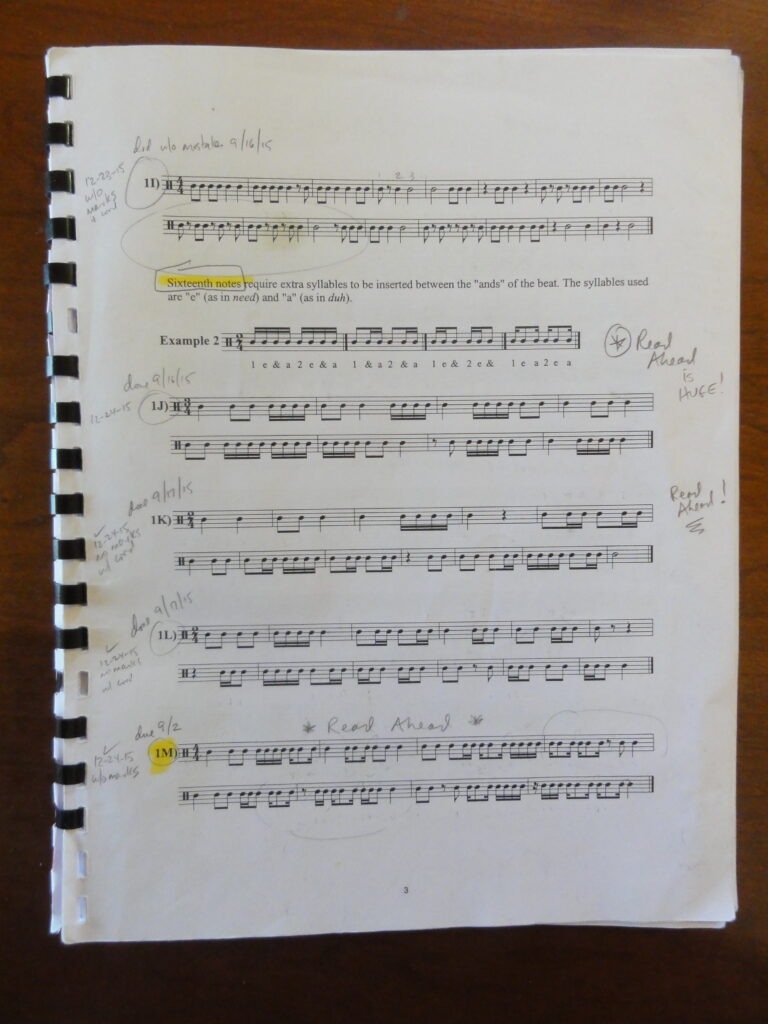
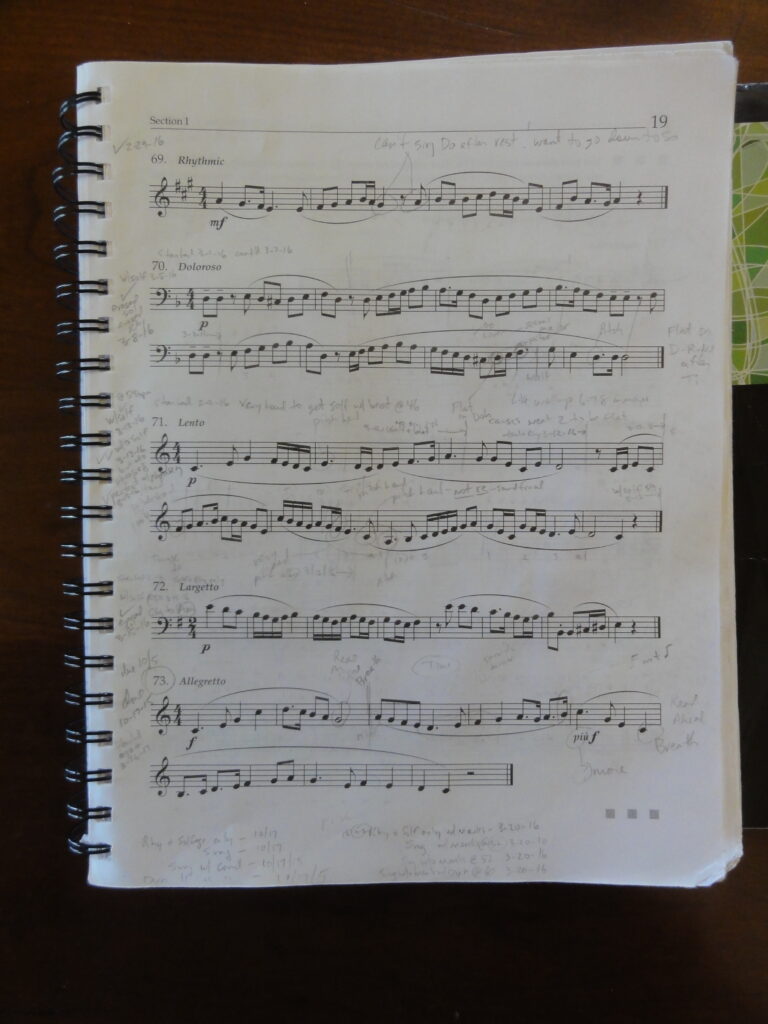
Theory was hard for me. Lab was especially difficult for me. I really had to work at it; I had to put a lot of hours on the homework, especially the lab homework. That took discipline. I had to do the homework, whether I was tired, or “in the mood” for it, or not. But I did it. I passed the classes. I think I got A’s on all four Theory semesters, and probably B’s on lab.
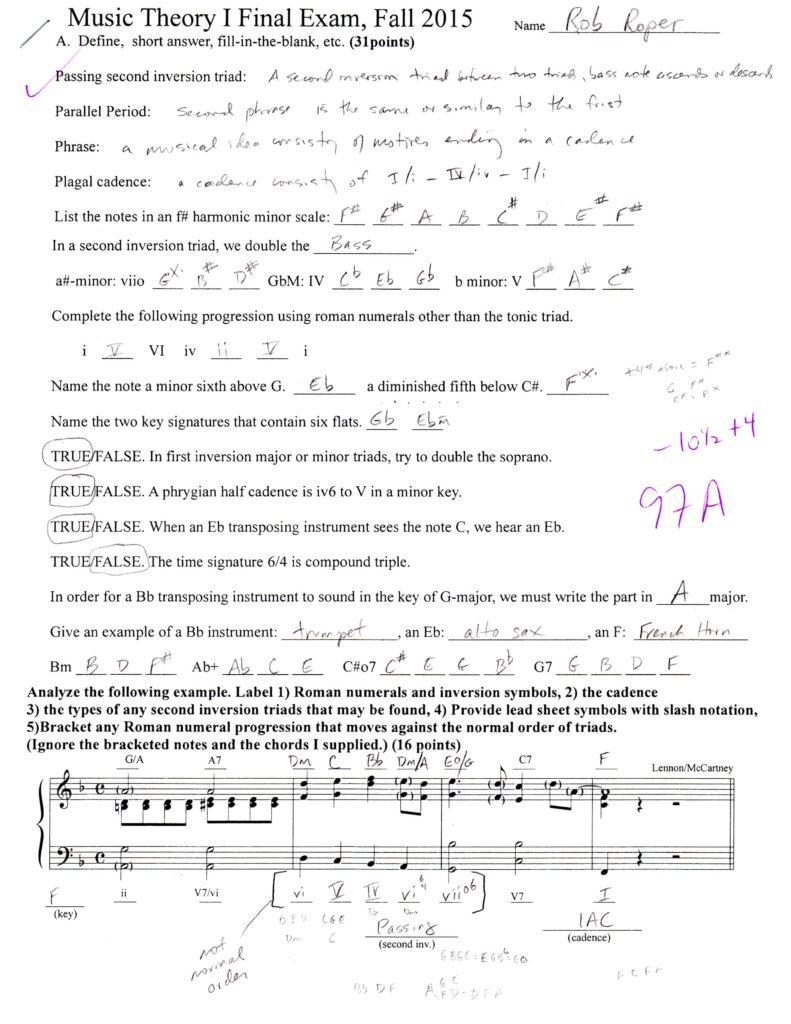
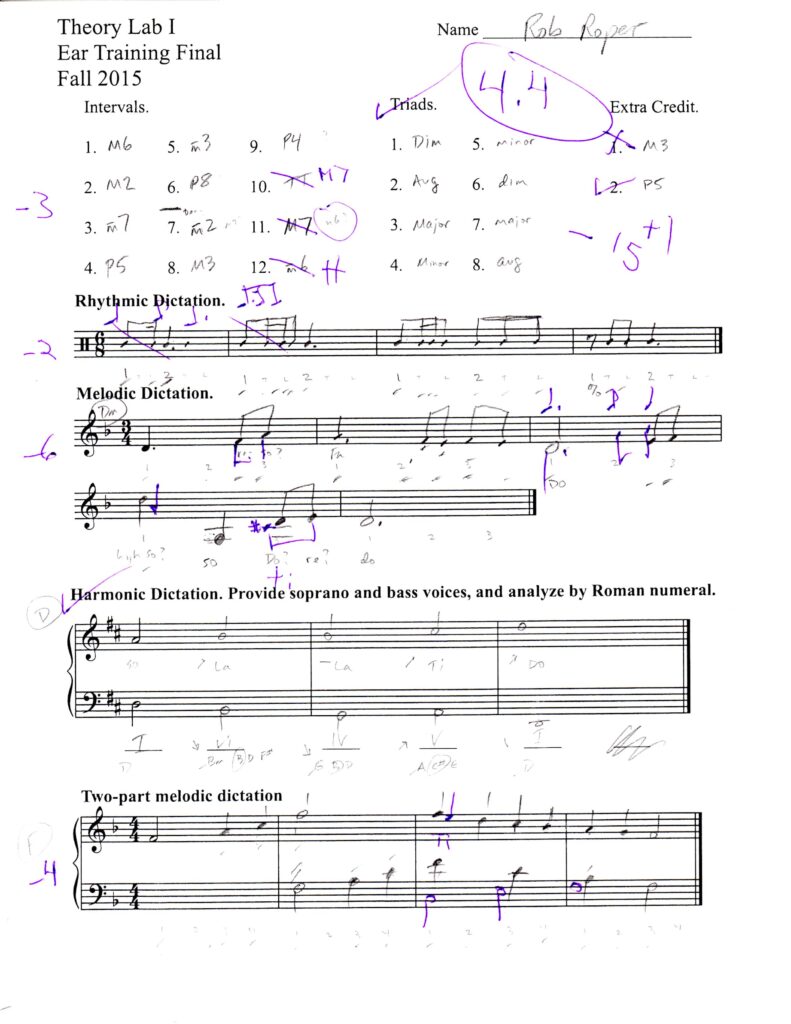
Composition
In my fourth semester, the Spring 2017 semester, I took Basic Techniques of Composition. Composition majors are required to take this in order to qualify for the composition program. We met once a week, and had to compose a brief piece each week. The mid-term and final exams were longer compositions– 3 to 5 minutes, for piano, clarinet and flute. I am very proud of my compositions, especially my final, which I named “The Journey,” as a tribute to the last two years I had spent as a music student at Metro St.
“The Journey” has three major sections, with short transitional sections between each. The four Music Theory semesters roughly correspond to the major eras of classical music. Theory 1 and 2 are from the Classical period, roughly the 18th century. Theory 3 roughly corresponds to the 19th century Romantic era, and Theory 4 roughly corresponds to the 20th century Modernist era.
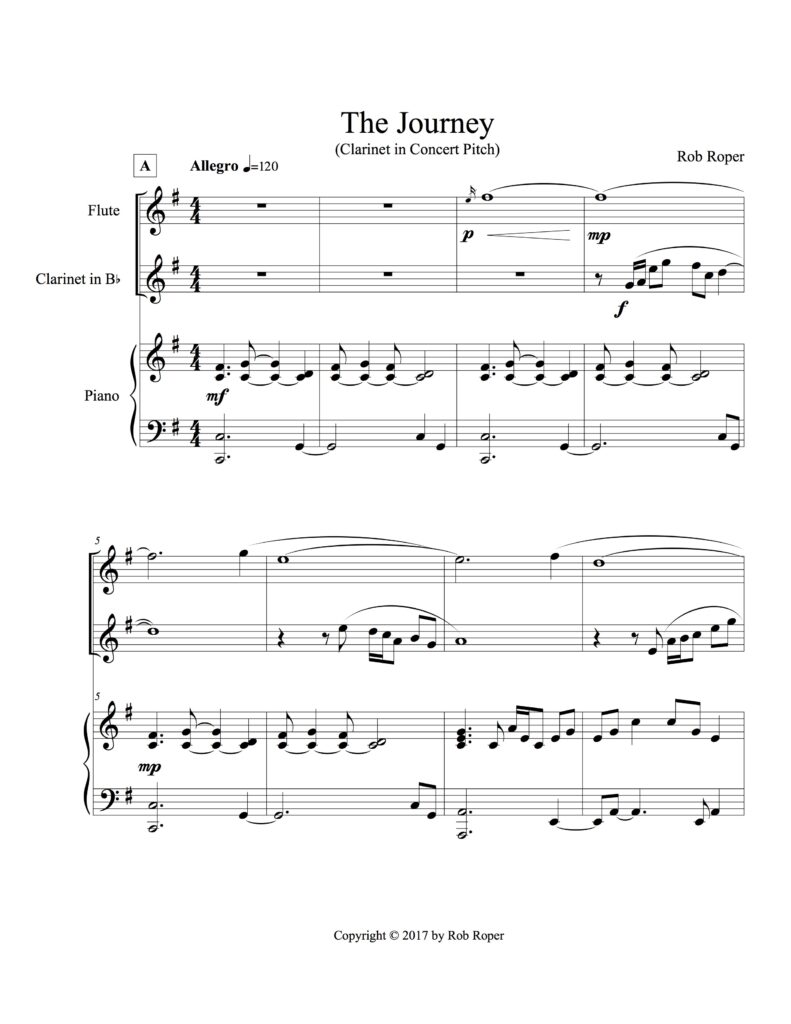
I wanted the music of “The Journey” to include components from all three eras, to represent what I learned in my journey through music theory. The piece begins with 20th century influence– in neigher major or minor mode, but in C Lydian mode. The piano has a rock style, and the clarinet and flute counterpoint melodies are jazz-tinged. The tempo is Allegro (moderately fast).
The transition between the first and second parts is 12-tone serial, also from the Modernist era. It begins with the clarinet jazz riff of the first part, now played by the flute, then repeats it rhythmically but with different tones. The rest continues following the 12-tone serial rules
The second main part, at Adagio tempo (slow) represents the Romantic era. It consists of a four-chord progression in A minor consisting of four-tone seventh chords, with the clarinet or flute frequently adding a 5th tone– the 9th. As with late Romantic era music, the emphasis is on the chords and colors, rather than melody.
The transition is a short, minimalist piano solo to setup the final part in C major at Allegro tempo. It repeats the piano riff of the first part, but now in C major. The jazzy flute and clarinet return, but the harmonies mostly conform to the Classical era.
One of the things we were required to learn was music notation software, Finale and Sibelius. I chose Finale to use for my compositions. Finale allows you to listen back to your compositions played with MIDI software instruments. Here is an mp3 of a MIDI instrument performance of “The Journey.”
What I Learned (Besides Music Theory)
These were two of the best years of my life. In these two years, I developed a whole new respect for people with music degrees. I saw how hard you have to work to pass those classes. The enormous amount of homework and practice. The sacrifices. The images of college students partying every day doesn’t include a lot of music majors. When I encounter someone with a music degree now, I have an idea what they went through. And I can make assumptions about what they know. I don’t need to audition them; I know they are good on their instrument.
And I can speak their language. I know how to communicate with professional musicians now. During the recording sessions for my latest project, I noticed that I was much more comfortable and confident directing the musicians on what I wanted them to do for my songs.
My singing abilities benefited from Music Theory Lab. Learning to recognize intervals, and sing intervals, has helped my pitch accuracy.
Music theory and composition classes will help my songwriting. The songs on the album I’m recording now were mostly written before I went back to school. My next batch of songs and instrumentals will have more interesting rhythms, melodies and chord progressions. But don’t worry– I’ll still write some simple folk and rock songs. 🙂
Finally, my two-year “journey” through music school confirmed for me that a music career was my calling. I felt comfortable in that environment. There were so many times when I said to myself, “I belong here. These are my people. I’m one of them.” I couldn’t continue past two years because my savings were exhausted, and, even though I was now 63 and eligible for Social Security, I didn’t have enough money in my IRA to retire. So I took one last job in the IT industry as a UNIX system administrator. I worked that job for 20 months, and saved as much as I could, building up my retirement fund. But even though that was the best day job I had ever had, in terms of pay and working conditions, I couldn’t wait to get off work at 5pm and begin my other job– my real job– music. In September, 2019, I quit that job– my last day job– and have been full-time music ever since.
Next: 2017-2020. Play live with my two bands, Scupanon and Electric Poetry.
